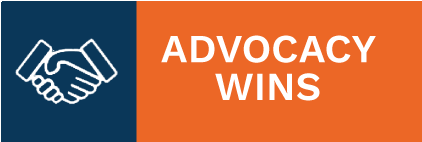
Academy-backed ‘Family Glitch’ Rule Is Finalized
Move Follows Longtime AAFP Advocacy
October 12, 2022, 3:17 p.m. News Staff — In a significant win for the Academy’s advocacy, more than a million Americans previously denied affordable participation in the Patient Protection and Affordable Care Act will now be able to seek coverage.

The IRS this week announced a final rule that clarifies the ACA’s health insurance affordability provisions and closes the so-called family glitch, a loophole in the ACA that has long prevented a substantial number of patients from accessing affordable coverage to primary care. The AAFP expressed strong support for the rule when it was proposed this past spring.
The rule updates the IRS’ narrow 2013 interpretation of how the ACA defines an employer’s offer of “affordable” coverage and who is eligible to receive premium tax credits when buying health insurance from ACA marketplaces. The prior definition considered coverage affordable for a family if its cost for the employee alone was no more than 9.5% of household income; it did not factor coverage for an employee’s family members into that 9.5%. The resulting gap left some 5 million Americans, more than half of them children, to pay insurance premiums out of pocket or remain uninsured. Estimates suggested that about 450,000 people fell into the latter category.
Under the new rule, family members of employees will be eligible for ACA premium subsidies if the family premium under employer coverage exceeds about 9% of the family’s total income.
“About 1 million Americans will either gain coverage or see their insurance become more affordable as a result of the new rule,” the White House said in an Oct. 11 press release. In an analysis issued earlier this year, the Commonwealth Fund said that about 200,000 previously uninsured individuals could gain coverage from this rule.
The Academy had long counseled regulators that the glitch was out of line with the ACA’s text and intent and presented a barrier to the AAFP’s policy goal of high-quality, affordable health care coverage for all. In its June letter supporting the proposed rule, the AAFP said almost half of the people caught in the family glitch reported incomes of less than 250% of the federal poverty level; another 33% earned between 250% and 400% of the FPL.
“Improving affordability of health coverage is critically important to improving health outcomes,” the AAFP said. “In fact, 46% of insured adults report difficulty affording their out-of-pocket costs, and over a quarter (27%) report difficulty affording their deductible, which leads to delayed or forgone care.”
Most of the rule goes into effect for the 2023 tax year, allowing qualified family members to enroll in subsidized marketplace coverage for the coming year. The IRS and HHS said the updated rule will be reflected in the enrollment period that opens Nov. 1.